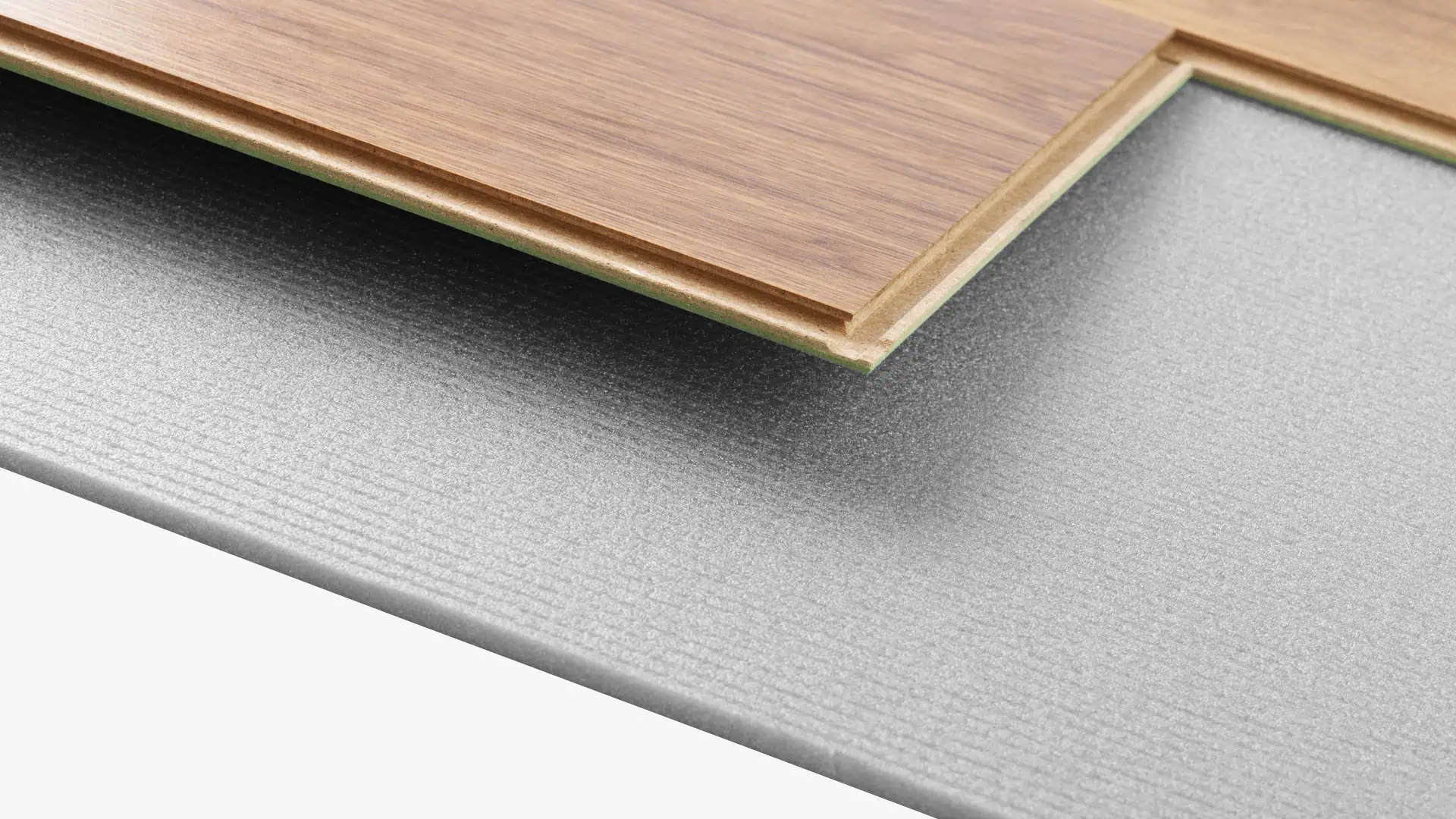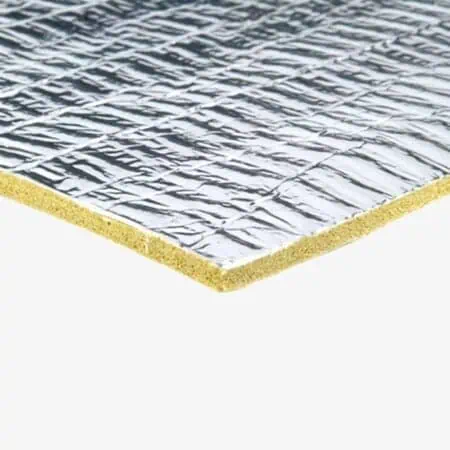When installing laminate, choosing the right underlay is as important as picking the flooring itself. A quality underlay will not only support your laminate but also increase its lifespan and sense of comfort underfoot.
Yet underlay thickness should be determined by various factors, including the room it will be installed in, the type of subfloor it will cover, your specific needs and requirements, and perhaps most importantly, your budget.
In this guide we’ll aim to help you pick the correct underlay thickness for your project, giving you the perfect balance of comfort, performance and value.
How thick is laminate flooring underlay?
The table below offers an overview of how we classify different laminate underlay thicknesses and what you can expect from each:
| TYPE | MEASUREMENT | KEY FEATURES |
|---|---|---|
| Thin | 1-2mm | 1-2mm underlay is considered a budget option. It will offer a basic layer of protection from wear and tear against the subfloor. At this thickness and price point, you will generally be sacrificing insulation, sound reduction and durability, with most products made from thin white foam. Although it’s not going to offer much of an upgrade to installing your laminate directly on the subfloor, we consider any underlay to be better than nothing. |
| Medium | 3-4mm | 3-4mm underlay is typically made using foil-backed foam or rubber. We consider rubber underlays in this thickness range to be the sweet spot. Rubber is extremely dense and durable, so a 3-4mm underlay will greatly extend the lifespan of your laminate flooring while offering a flat and stable base for installation. However, 3-4mm of foam doesn’t offer the same density level or support, as it’s naturally spongy. Therefore, we recommend going for something more substantial if you want a foil-backed underlay. Underlays in this thickness range offer multiple benefits, including improved cushioning, sound reduction (Silentfloor Gold 4.2mm, for example, can reduce in-room noise by up to 30%), better insulation and in-built DPMs to negate moisture damage. And they do all this without raising your floor height too much. |
| Thick | 5mm+ | Any laminate underlay 5mm or thicker will come in two forms: foil-backed foam or fibreboard. Foil-backed underlay sees a layer of thick, cushioned foam backed with silver or gold foil. The foam creates an insulating barrier against thermal loss and noise, while the foil acts as a DPM to stop moisture ingress. These products offer higher TOG and impact sound reduction ratings than rubber alternatives, meaning they keep heat in and noise out. The upshot is a warmer, more peaceful living environment. On the flip side, foam underlay sacrifices density to do this and, therefore, isn’t recommended in areas with high foot traffic, like hallways and kitchens. Similarly, if you have underfloor heating, you may find the TOG values too high to work efficiently with your system. Fibreboard is a commonly used alternative to rolls of underlay. It comes in rigid sheets 5-7mm thick that are slightly easier to lay than laminate underlay. The main advantage of fibreboard is that it helps rectify imperfections associated with subfloors, such as cracked or scratched surfaces, unevenness or even instability. Fibreboard is dense and solid, making it a good option for areas with a lot of foot traffic. |
Density vs. thickness
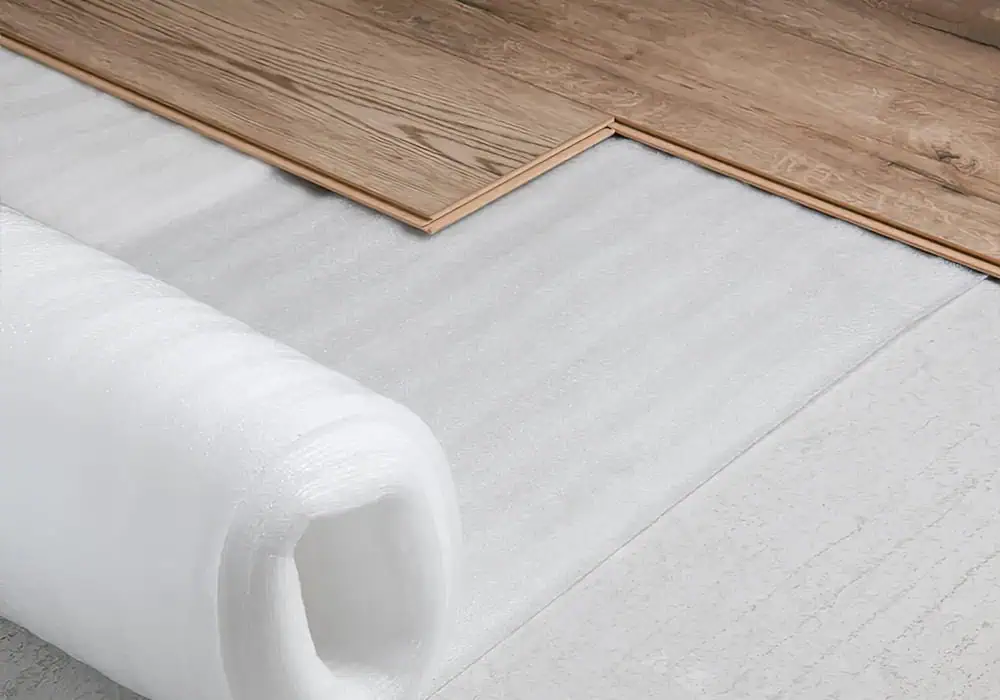
On each of our laminate underlays you will find a density rating, which is a number that represents just how much foam/rubber/sponge is packed into each cubic metre of the product. It’s expressed in kg/m³ to make comparing like for like easier.
Generally speaking, the higher the density rating, the better quality and more supportive the underlay will be (and the longer it will last). This is why it’s important to consider both density AND thickness when selecting an underlay, as it’s possible that a highly dense 4mm rubber product would outperform a thicker 6mm foam product that skimps on material.
The latter would offer a nice cushioned sensation underfoot to start with, but flatten much quicker over time, making the former a better long-term investment. This is particularly important with laminate as it’s installed as a ‘floating floor,’ so it needs long-term stability to maintain its integrity and stop it from rocking.
For a typical home, we’d recommend a density rating above 100 kg/m³ for rooms with medium footfall and something above 250 kg/m³ for areas of high traffic. This will ensure your underlay outlasts your flooring but still provides a cushioned sensation underfoot.
Factors that influence laminate underlay thickness
Budget

Budget is the primary consideration when making any purchase. If money is no object and you don’t want to sacrifice, go for a top-of-the-range rubber or foam underlay and reap all the benefits.
For everyone else, you’ll want to get the most for your money. This might mean sacrificing a millimetre in thickness for a slightly better density rating, prioritising insulation over noise reduction, or going for an unbranded product over one from a well-known brand.
If you’re unsure what underlay to buy for your project and where to compromise, contact our expert team at contact@simplyunderlay.co.uk. We will give you a personal recommendation based on your specific budget and requirements.
Existing door clearance
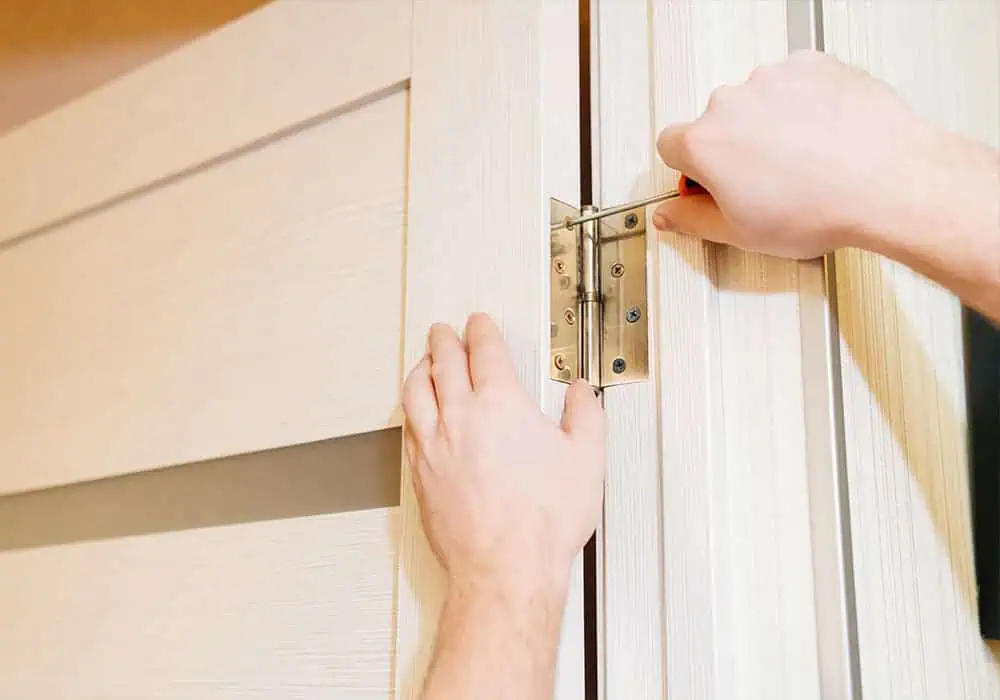
Something worth considering anytime you replace your flooring is floor height and existing door clearance.
Going from thin sheet vinyl to a thicker laminate with underlay, for example, may mean doors need shaving and rehanging or rising butt hinges installing. Both of these tasks are best completed by a joiner, adding a level of expense you might not have budgeted for.
Subfloor type
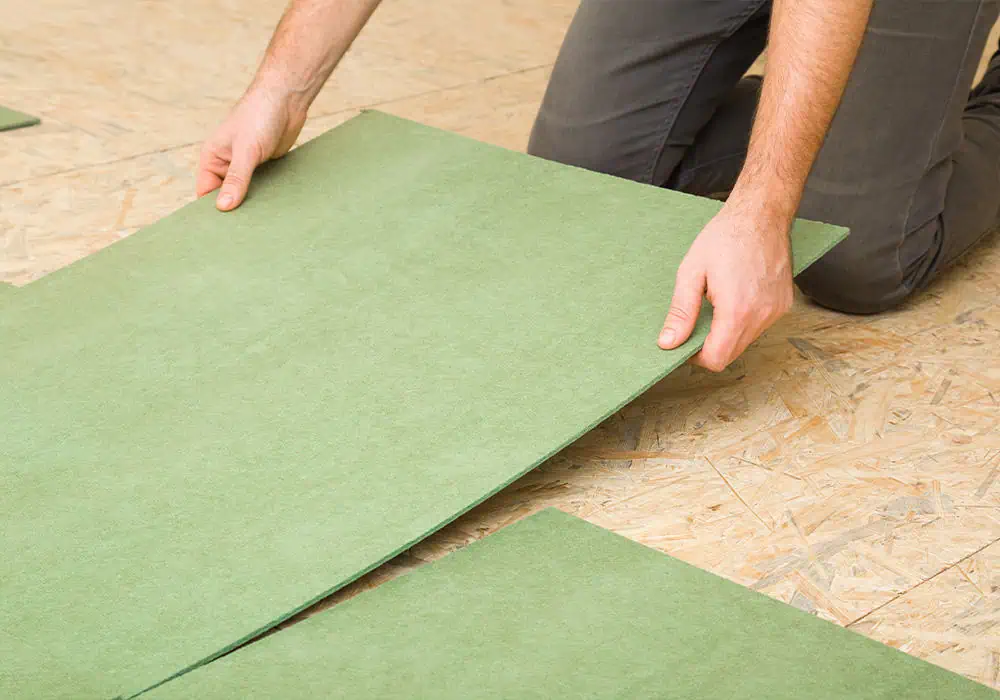
When installing laminate, it’s imperative you have a smooth, level subfloor. Any unevenness or damage will quickly undermine your laminate, causing issues with rocking or even damaging the board’s delicate locking mechanism.
In our opinion, uneven floorboards or lumps and bumps in screed should be fixed professionally prior to installing underlay. However, thicker, denser underlays can negate any minor imperfections in the subfloor (up to a couple of mm tolerance), so it’s something to consider if you’re concerned.
Fibreboard is another excellent solution to poor subfloors. The rigid boards help conceal and level any issues while offering good long-term durability.
The additional benefit of going for a thicker underlay is they are naturally better insulators, which means they can reduce heat loss and impact sound from footsteps.
Underfloor heating systems
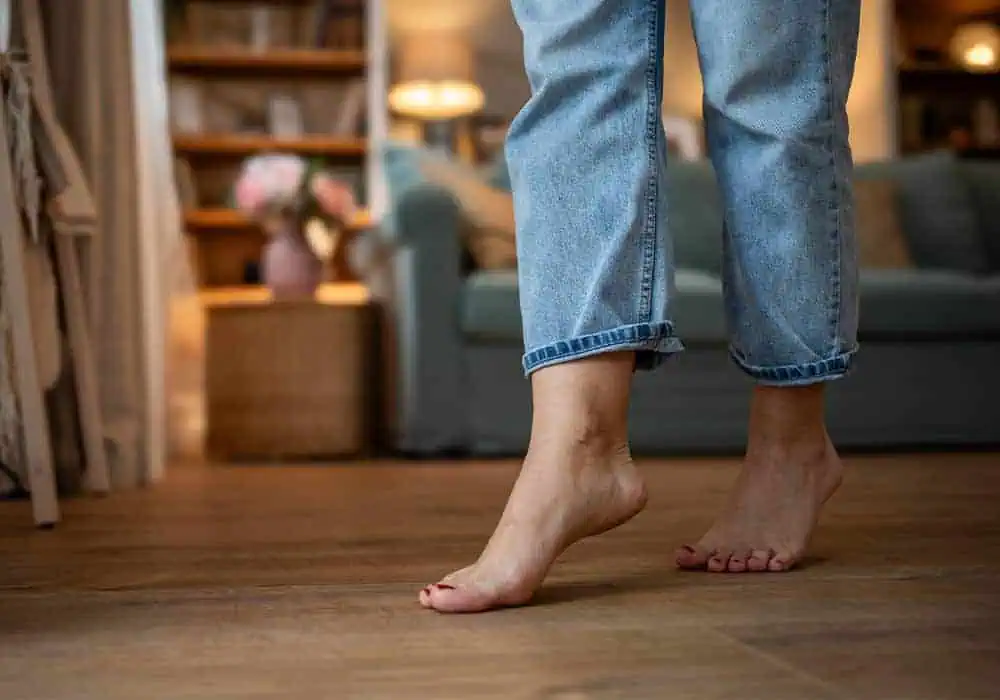
Homes with underfloor heating (UFH) systems installed will require a specialist underlay with a low TOG rating. For optimal efficiency, we recommend keeping your underlay under 0.4 TOG.
TOG measures thermal resistance – the higher the value, the less heat can pass through the underlay. Therefore, underfloor heating underlays typically fall into our ‘thin’ or ‘medium’ categories (1mm – 4 mm).
Some standout products compatible with underfloor heating include Timbermate Excel, Silentfoor Gold and Heatflow Laminate.
The room it will be installed in

Each area of your home is used for a different purpose and has its own unique requirements.
For example, stairs and hallways take the brunt of the foot traffic and aren’t places where people tend to linger, so you’ll want a thinner, denser underlay that will support your laminate and won’t degrade under all that use. The same goes for somewhere like your kitchen, where people tend to be on their feet more and your laminate will get more wear.
Compare this to your living room, where you enjoy extended downtime. You’ll likely want a thicker and better-insulating underlay to create a warm, cushioned feeling.
Consider how you’ll use the space daily and then opt for an underlay thickness that fits the room’s needs.
The best thickness for laminate flooring underlay
In our experience, a foil-backed rubber underlay between 3-4mm is the best thickness for a laminate flooring underlay.
This type of underlay is highly dense (700+ kg/m³), providing a stable, solid base for your laminate that will extend its lifespan while offering additional insulation, sound reduction and an integrated dampproof membrane to prevent moisture damage.
Not only that, it manages to do all the above without substantially raising your floor height, so door clearance shouldn’t be a concern.
Things to remember
- Thicker doesn’t always mean better.
- An underlay with a higher density rating will last longer and provide long-term support for your laminate.
- Medium-to-thick foil-backed foam underlays are usually great sound and heat insulators.
- A thicker underlay will help level out uneven subfloors.
- Fibreboard is easier to install than rolls of underlay and will help rectify imperfections associated with subfloors, such as cracked surfaces, unevenness or instability.
- If the thickness of your new laminate and underlay is greater than your existing floor, you might need to shave down doors or use rising butt hinges.
- Rubber underlays between 3-4mm thick are appropriate for all areas of the home.
- Underlays compatible with underfloor heating systems are typically thinner and have low TOG values (under 0.4) to allow heat to pass through.
Need more help?
Hopefully this guide has armed you with the knowledge to make a confident purchase.
If you’re still unsure how thick your underlay should be, please get in touch with our expert team at contact@simplyunderlay.co.uk. We’ll be more than happy to help.

